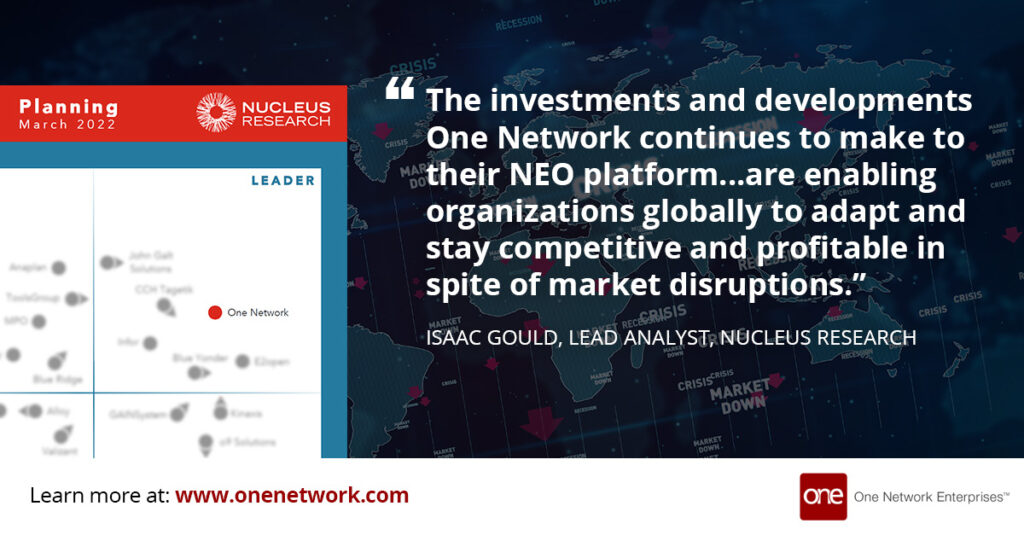This post has already been read 21079 times!
Planning without this, is a losing strategy…
In supply chain management, we do our best to develop executable plans. But, as we all know, the real world delivers enough variation in demand, supply, and lead times that execution will typically differ from the plan. Reacting to this variation as effectively and efficiently as possible enables us to deliver on targeted customer service levels at the least landed costs.
Our plans are created so that they can be executed with real world variation, by structuring them with high levels of planned inventories, premium freight, expediting, and lead times, as well as staffing their execution with armies of planners, schedulers, and dispatchers. However, this method is too expensive, leads to poor customer service levels, and just isn’t working anymore in today’s market.
Why Traditional Supply Chain Planning Fails
Today’s planning systems were developed based on a business problem that ERP systems were not designed to solve; mainly solving for demand, material, and capacity holistically using in-memory technology. This capability produced much better and more efficient production plans and a new class of software was born.
"The expansion of supply chain networks, both upstream and downstream, has introduced new risks to supply chain management. There's only one way to solve them…" -Joe Bellini Share on XHowever, over the past few years we have seen significant supply chain network expansion, which has severely tested this model, and found it inadequate. Supply chain networks expanded downstream through the rise of consumer-direct, omni-channel and distributed order management (DOM). There has also been major upstream expansion based on the cost and material advantages of global sourcing. And of course, we have seen significant event level disruption through Covid and the war in Ukraine, so we must be prepared to react to events on a global basis.
This has resulted in data and processes are fragmented and distributed across the supply chain. Batch processing to synchronize data between systems and partners, increased latency, “black holes,” and sub-optimization in silos. The misalignment drives inefficiencies and fails to deliver on the goal of highest service to the end-customer with the least landed cost.
The Network Approach to Planning (& Beyond)
Today, the market requires a planning platform that provides a seamless workflow from planning through execution, which operates using a single version of the truth in real time. This is what One Network Enterprises pioneered in 2002, and has built, from the ground up. The approach has been proven in multiple industries, including in highly complex, demanding, and mission-critical environments, such as in the U.S. Navy, Air Force, and Marine Corps.
In this network-first approach, the plans no longer need excess investment in terms of inventories, lead times, costs, expense, and labor, in order to deliver on customer service levels and least landed cost objectives. And since planning and execution run on the same platform and data set, as execution is adjusted to solve for problems and issues, the plans are seamlessly updated in real time. Planning moves from being event-based, week-to-week and culminating in the monthly meeting, to a continuous process across all parties.
Supply Chain Planning for Uncertain Times – "We need to move from event-based, periodic planning, to a continuous planning process." -Joe Bellini Share on XThe net result is earlier visibility and actionability across problems and issues, which would otherwise have caused customer satisfaction issues, along with missing a monthly, quarterly, or annual plans. Core to the approach, is using prescriptive analytics, powered by causal-based machine learning, across an integrated data model which spans all trading partners. On that basis, the system seamlessly rolls up (aggregates) data for planning, and rolls it down (disaggregates) for execution.
Given the long physical lead times associated with global sourcing, One Network’s Digital Supply Chain Network™ is executing and moving materials upstream, while still planning and adjusting downstream. Given the reliance on global sourcing, the platform provides risk-based AI/ML analytics to provide resiliency, continuity, and operational readiness.
Without a seamless planning and execution environment it is impossible to solve for today’s problems – neither ERP nor Advanced Planning & Scheduling systems are designed to solve for this. Visibility tools are limited to finding problems but not being able to solve those problems.
That’s why I believe, only a true network approach, one that includes planning and execution, as well as all trading partners, can meet today’s planning and execution business challenges.

Recommended Posts
- Are Micro Fulfillment Centers the Next Frontier in Retail Logistics?
- Rethinking Defense Supply Chains with Network-Based Command Centers
- How to Use Predictive Analytics to Streamline Cross-Border Logistics
- AI Plus Humans for Resilient Freight Forwarding in a Complex World
- Modern Defense Supply Chains: The Essential Capabilities for Multi-Domain Operations
- 8 Actionable Supply Chain Trends for 2023 - January 19, 2023
- Constraint-Based Supply Planning & Execution - November 21, 2022
- Supply Chain Planning Control Tower - September 29, 2022
